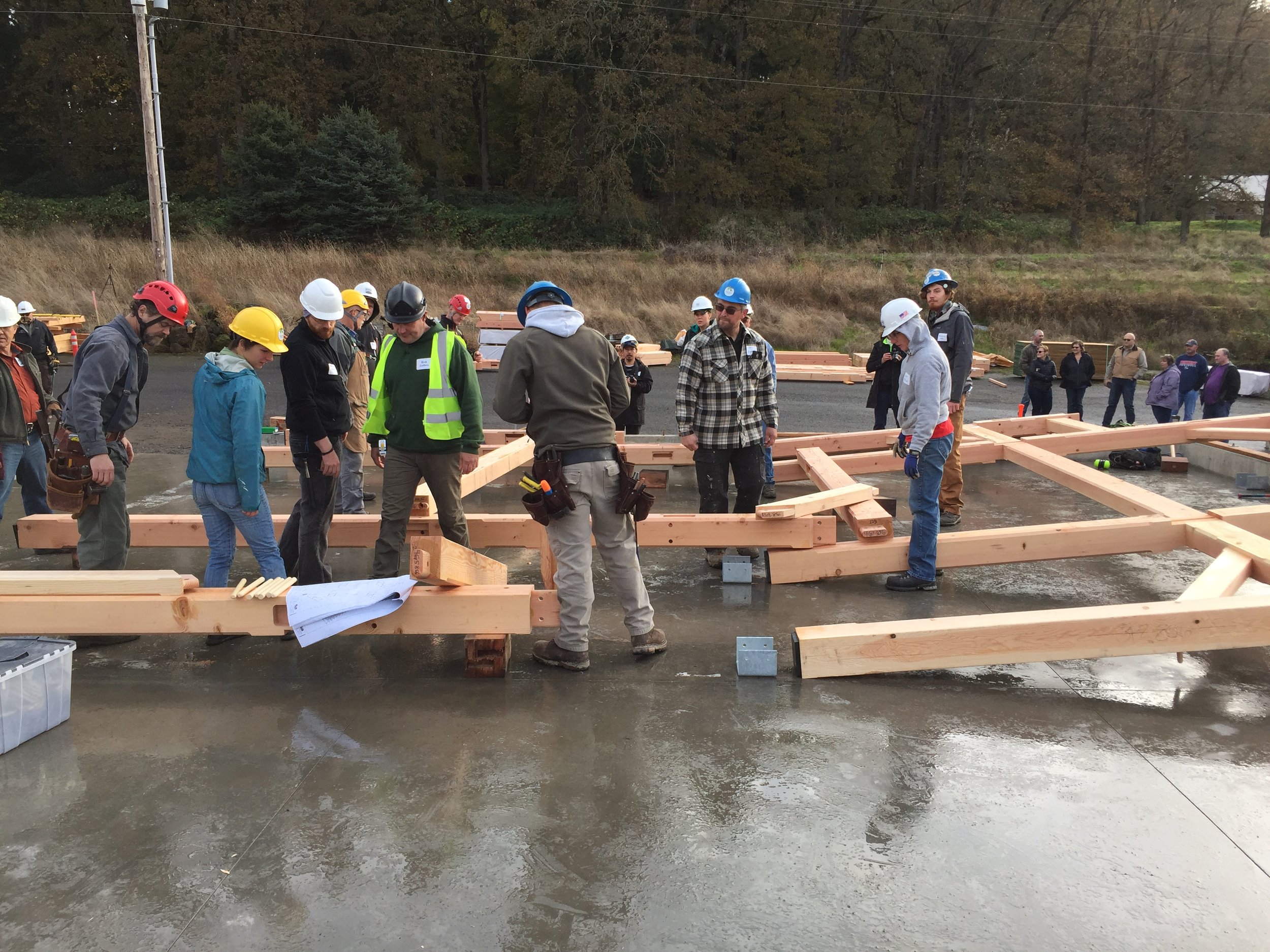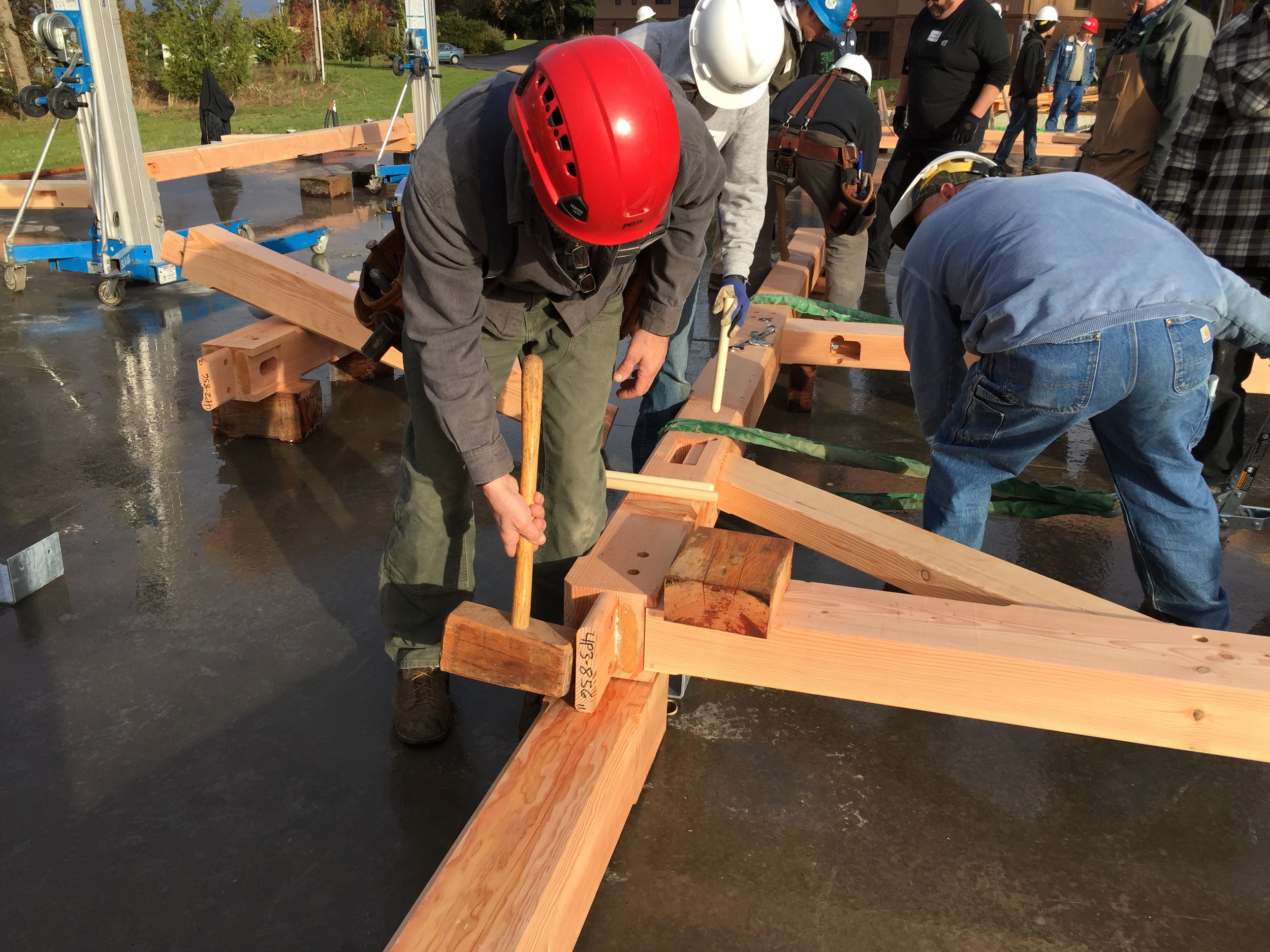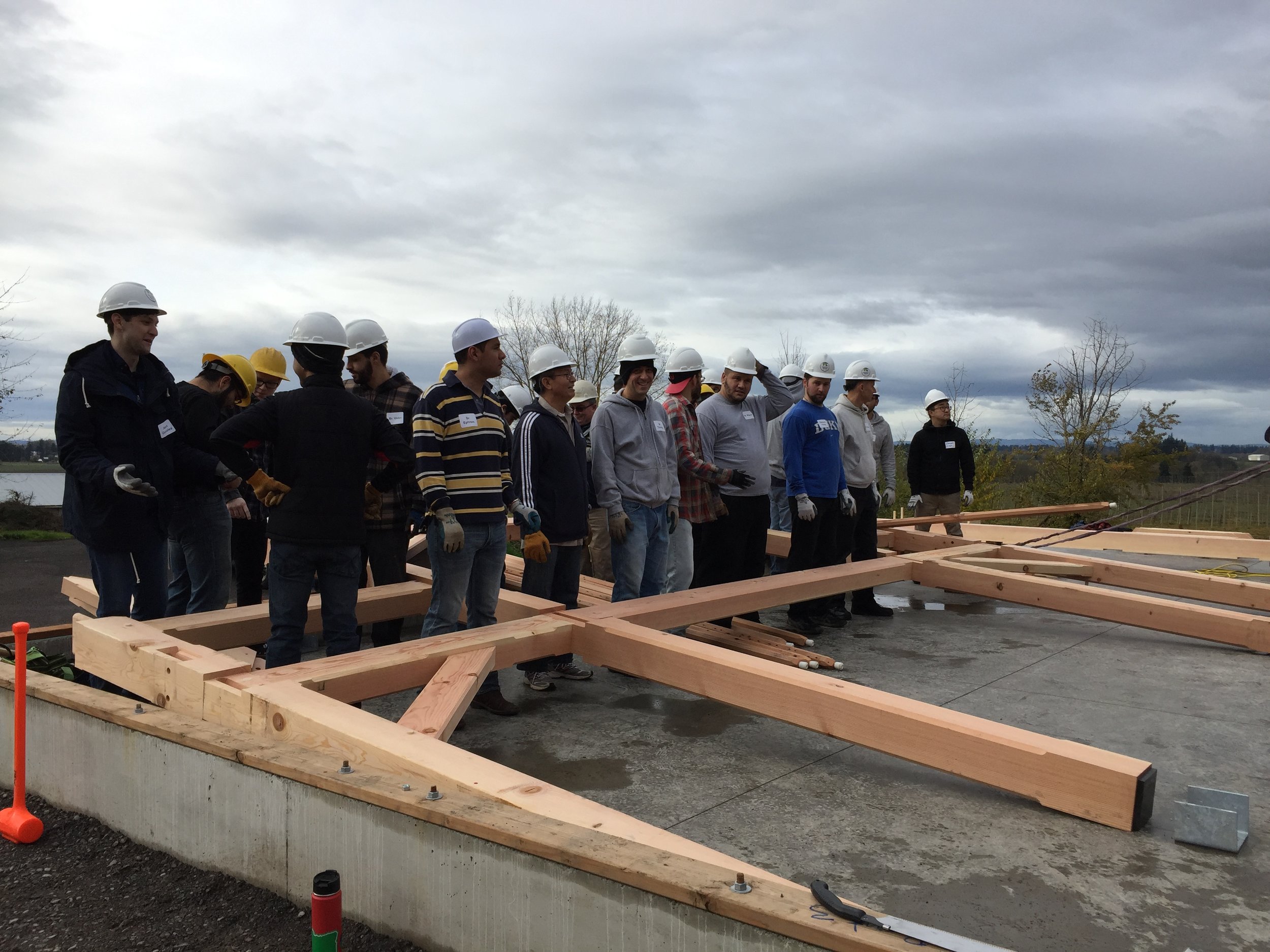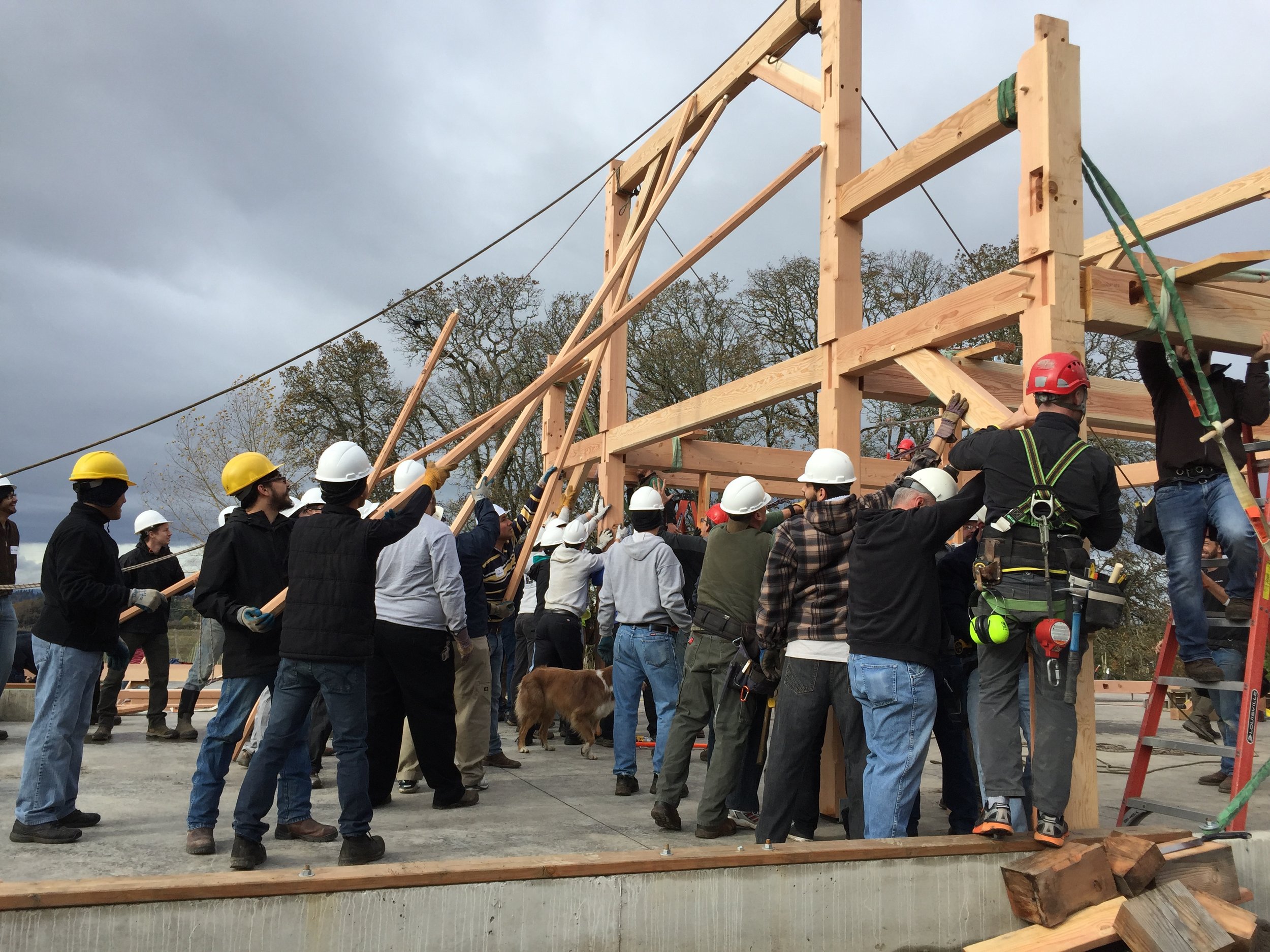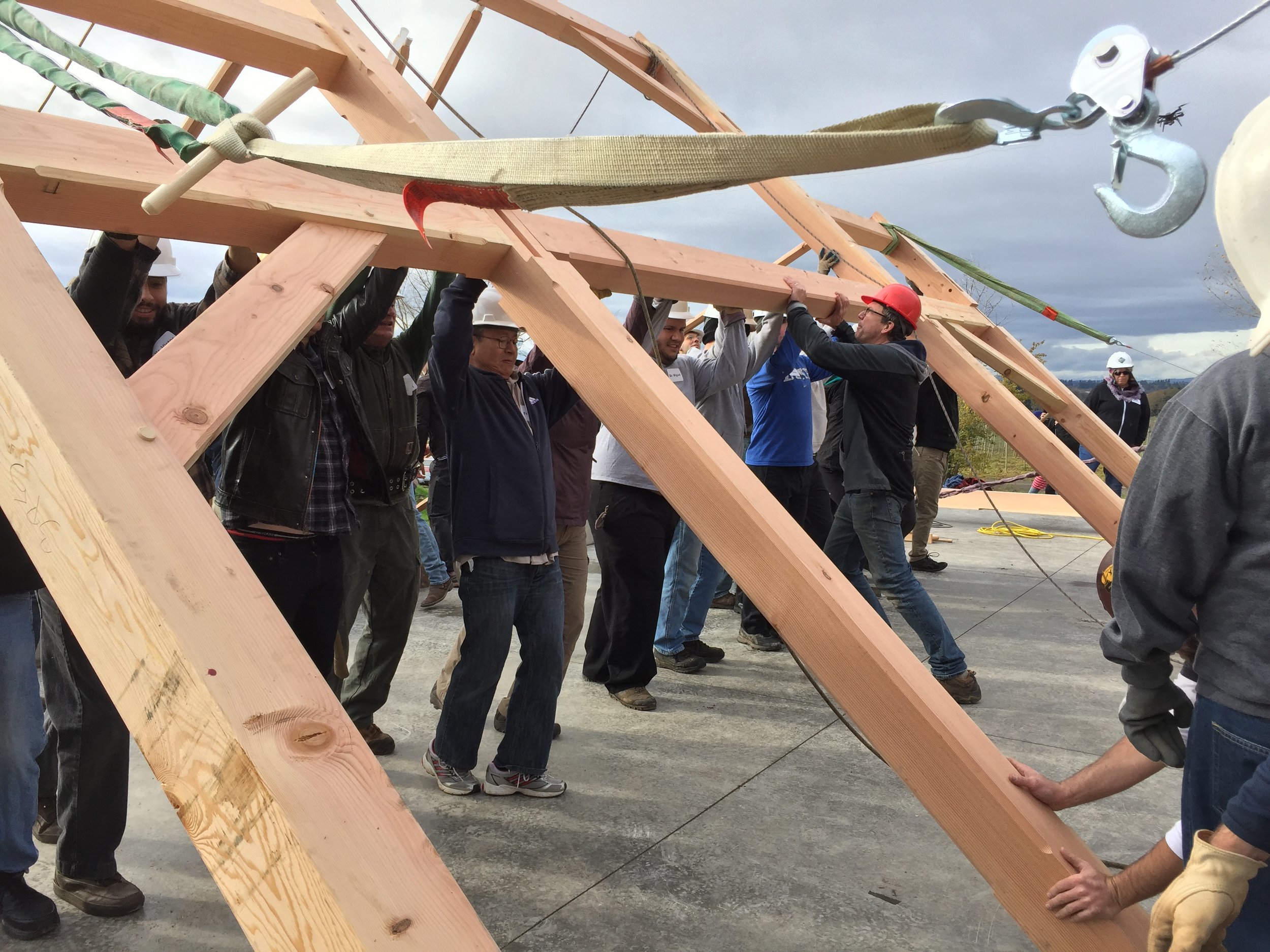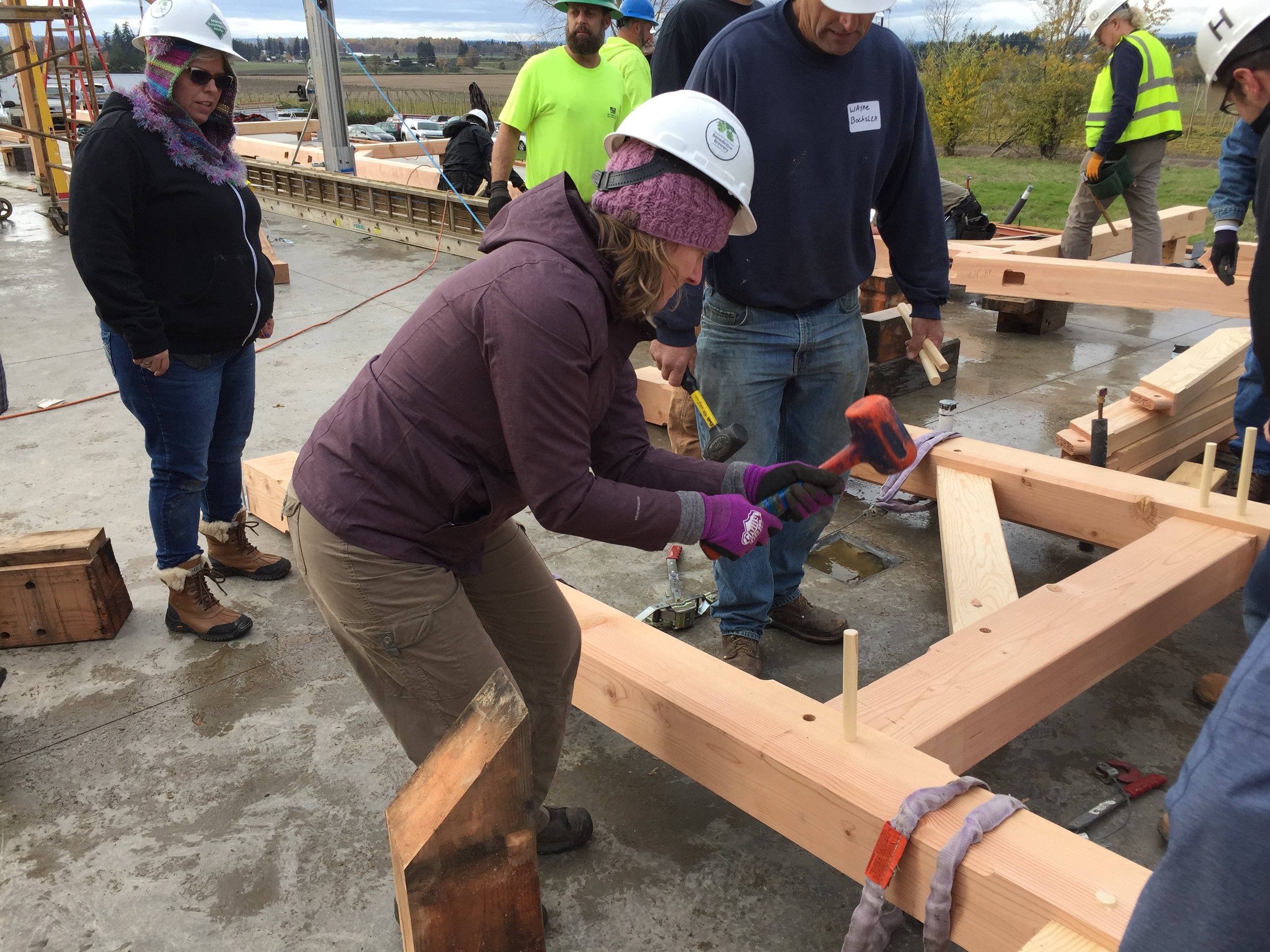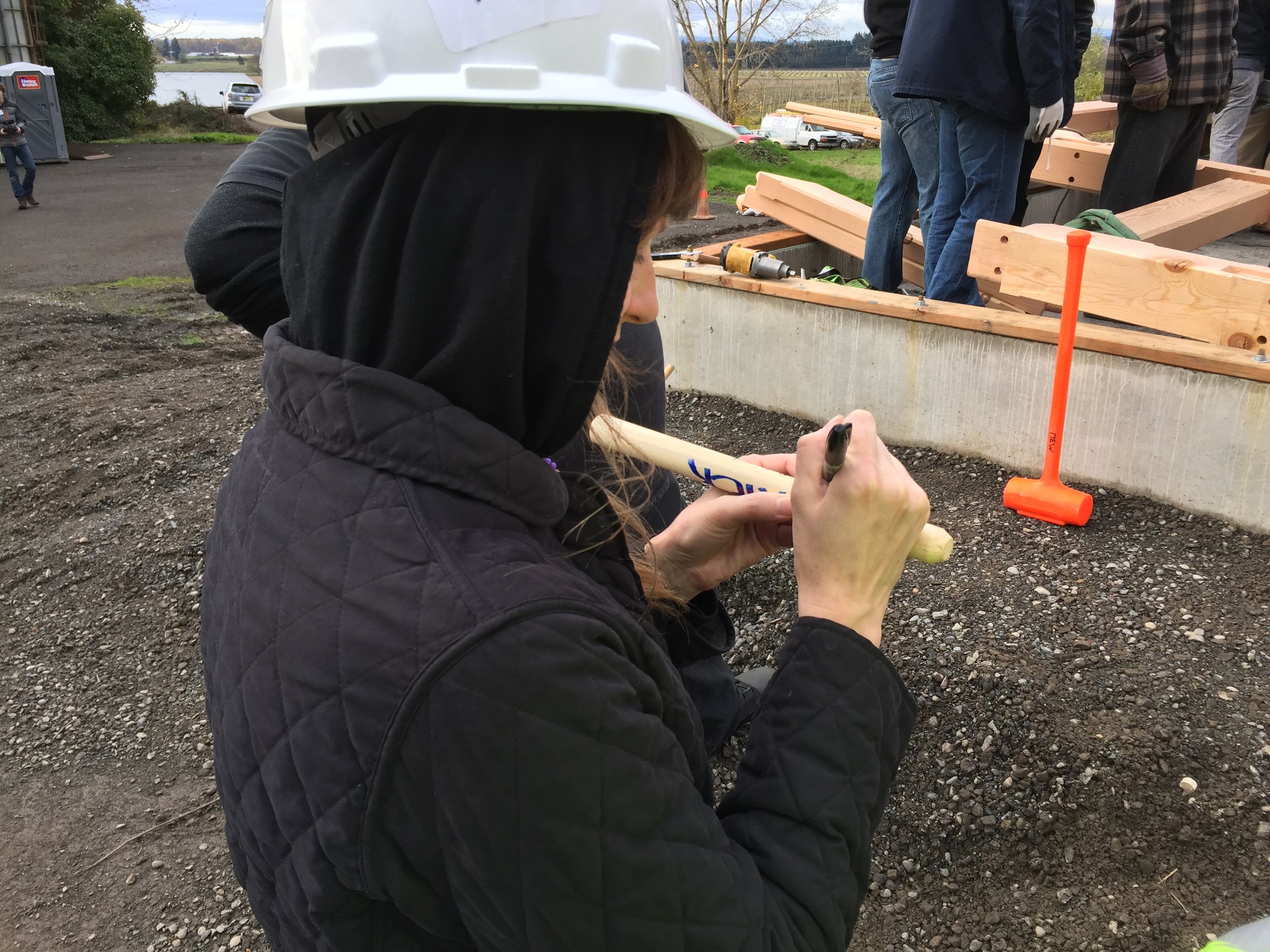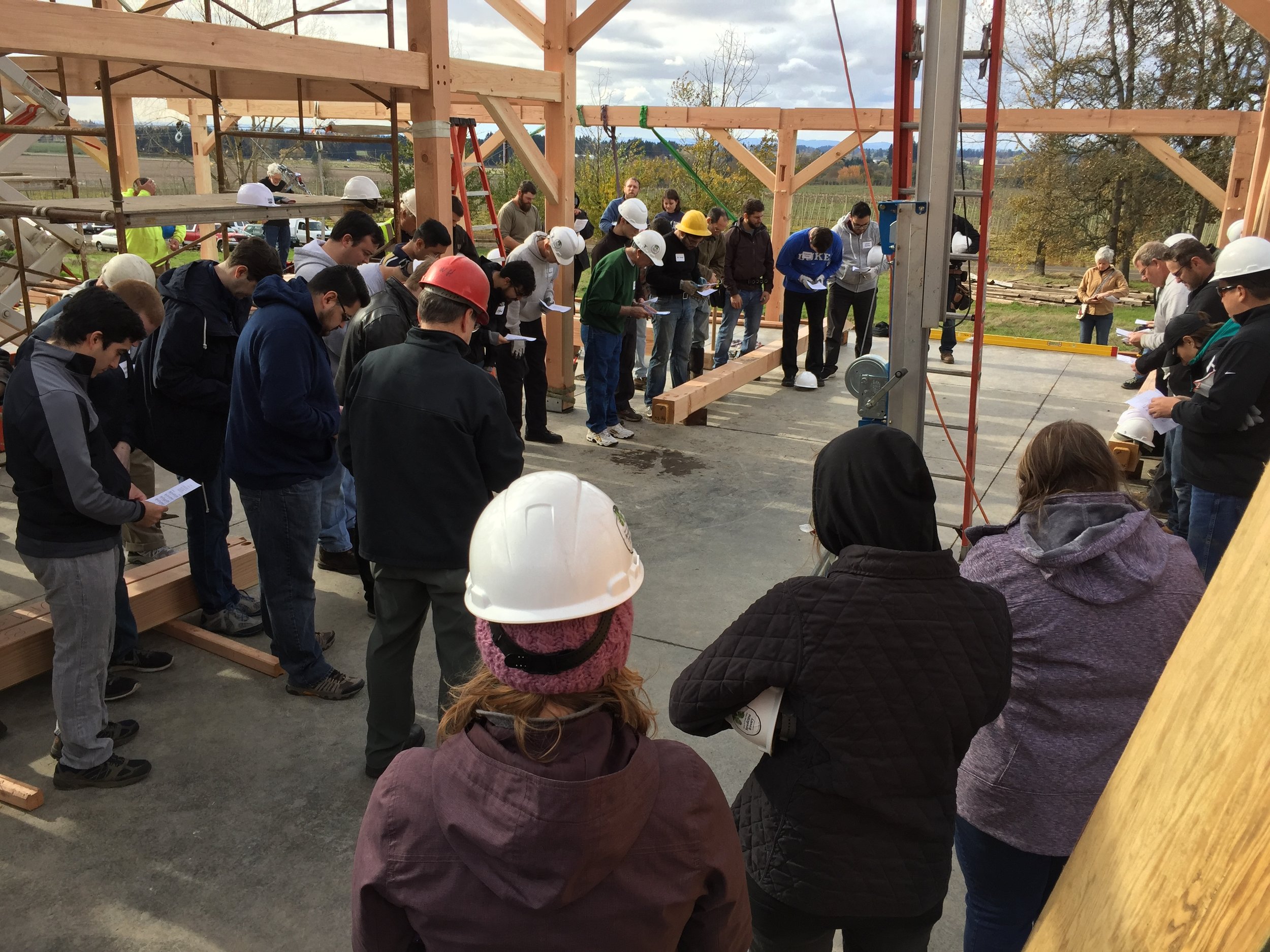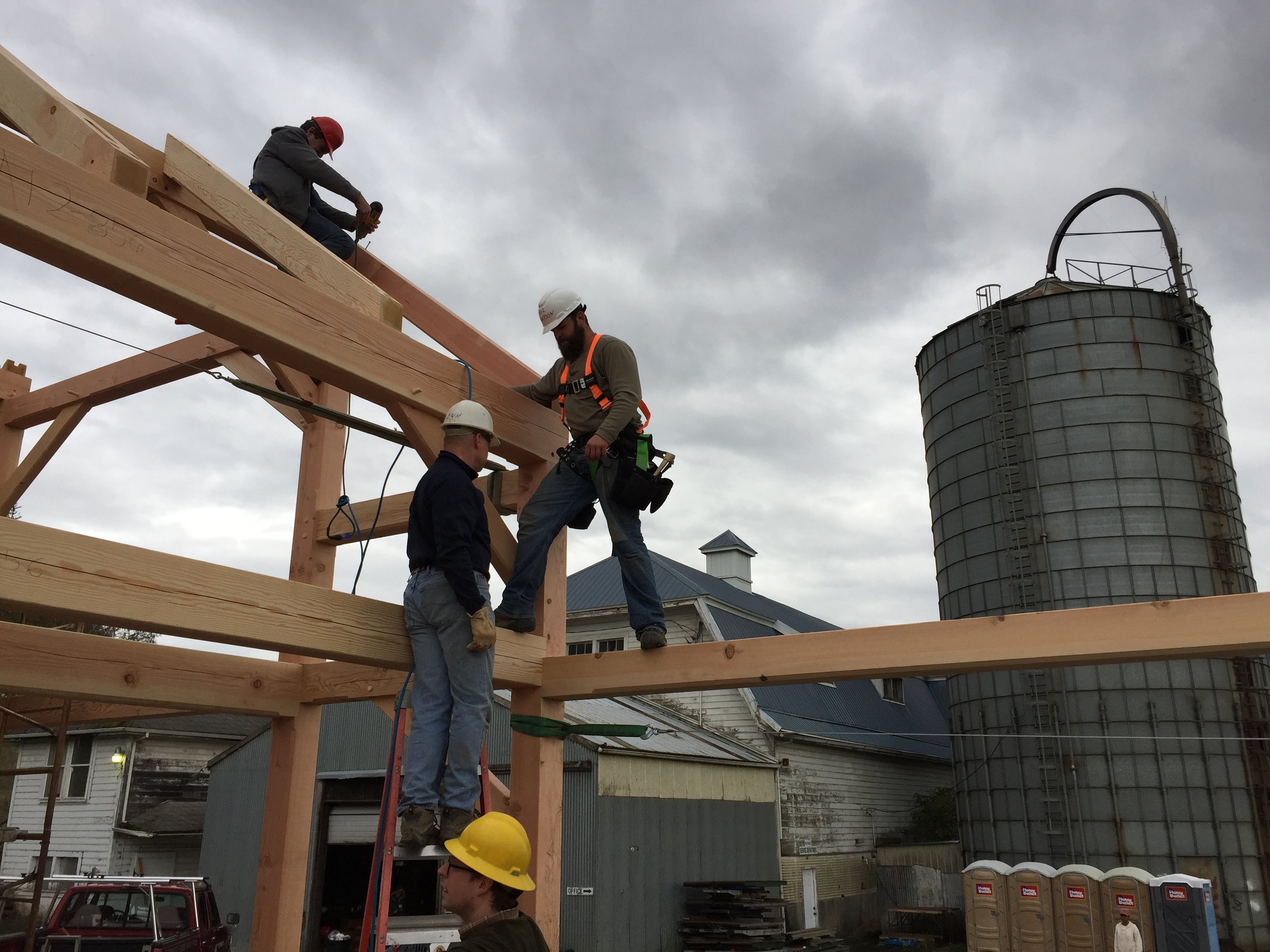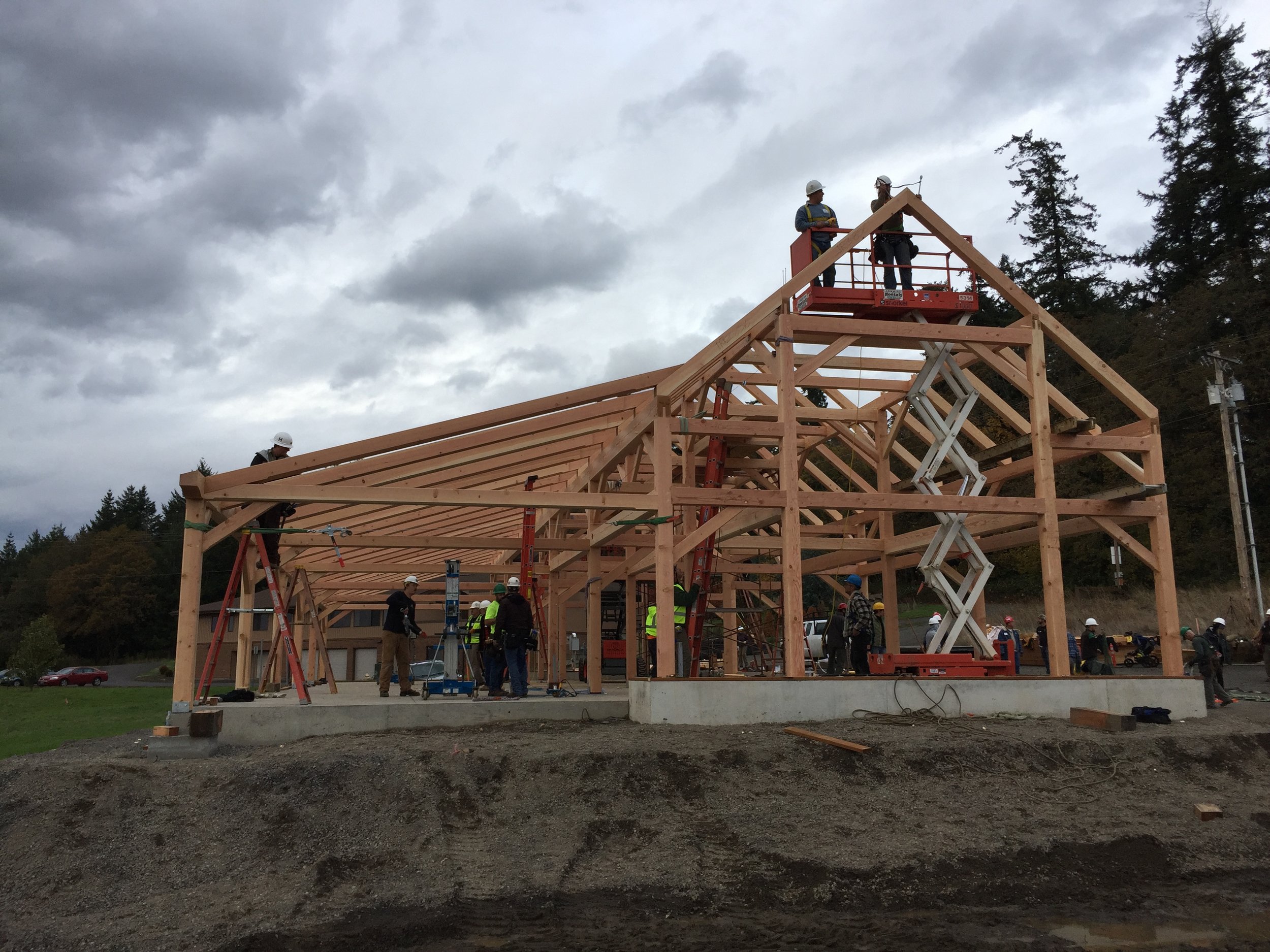A Monastic Brewery Rises in Mt Angel
The Trappists get all the attention. In Belgium, the monasteries of Orval, Rochefort, Westmalle, and Westvleteren receive thousands of international tourists who visit with a demeanor of awe. Their beers travel the globe. Books are written about them. Because sales are so strong, international conglomerates try to insinuate themselves into the Trappists' reflected glory--with stout resistance from the monks. The brand is so strong that Trappists in Italy, Austria, The Netherlands, France, the United States--and possibly England--have decided to start their own breweries.
But they're not the only monks who brew. Benedictines have breweries at the monasteries of Andechs and Weltenburg in Germany, San Benedetto in Italy, Ampleforth in England, and even Christ in the Desert in New Mexico. And on November 11th, the first shape of the newest Benedictine brewery rose next to an old dairy barn that overlooks hop fields in Mt Angel, Oregon.
It is the latest, most tangible phase of a project that started six years ago. At that point, it was merely a possibility, one Father Martin Grassel and Director of Enterprises Chris Jones were pushing around. An actual brewhouse was still far in the future, a fact that troubled the monks not in the least. In the years since then, the abbey has nosed the project along in the way monks do--slowly and with deliberation--until now, when all that thinking has begun manifesting in wood and concrete.
A year after they started considering this project, Chris reached out to Stan Hieronymus and me for our thoughts. I've continued to check in with Chris over the years as they've considered different places on the monastery grounds for the brewery. For six months or a year, Chris would mention one site until, for reasons of seismic permitting or location or ones obscure to me, it was abandoned and another had taken its place. It was therefore a mild shock when he emailed around the first of November to invite me to the "brewery-raising." I hadn't even been aware of the new site, and yet here they were with a concrete pad and a plan to erect, with the help of volunteer and monk labor, an entire timber frame over the course of a day.
I suppose I shouldn't have been too surprised. The monks of Mt Angel are deliberative, but they're also decisive. Those five years of planning and consideration were punctuated by a series of final decisions. One day early on I received a call to come visit the brewery and listen to a brand agency suggest different approaches. It was a fascinating meeting, attended by a large group of monks and Bill Chiaravalle of Brand Navigation. I haven't been to a lot of these, but if I go to another hundred, I don't expect to hear a discussion like the one the monks had.
Benedictine monasteries have a particular mission quite distinct from commercial concerns. It's the oldest order and the deepest taproot in Catholic monasticism, dating all the way back to 529. Benedictine monasteries have always been focused on self-sufficiency as well as welcoming and engaging with the world. Brewing has long been a fixture of monasteries; it sustained the monks, supported the monastery, and provided a welcome to guests. As the monks of Mt Angel considered what their "brand" should be--a commercial term met with some discomfort in the room--they spoke in terms of their mission. These potential brewery-owners saw their role in society as healing, helping, and ministering. Their considerations started with a foundational question: does the brewery advance our mission? This had to be answered before any consideration of what the brand might be.
The branding discussion led to a question about how to harmonize their idea of the function of the brewery with their beer's public presence out in the world. Amazingly, this meeting happened before the monks voted to move forward with the project. They wanted to know ahead of time how the whole thing would work before they committed to it. And yet, decisively, the brand image that come out of that meeting was the one they're using today.
That grounding has been a feature of every step along the way, including who would make it, where the brewery should be sited, the beer itself, and and how to use it to bring people to the monastery. After the branding meeting, there was a subsequent tasting session with all the monks to get their impressions. The monastery brought in OSU professor Tom Shellhammer, Upright's Alex Ganum, and homebrewer/historian Bill Schneller to educate the assembly. Most had very little knowledge or background of beer, but they again brought their mission-focus to the meeting. We tried some classic Belgian beers (Orval, Rochefort, Dupont) among others, and it was fun to watch the monks taste flavors they never thought beer could possess.
Father Martin's homebrew kit. Photo by Don Williams
Throughout this entire process, Father Martin continued to brew on his own. He built an impressive homebrew system that is sophisticated enough to approximate commercial production. Beginning in 2013, the monastery began working with OSU on test batches of beer, and then scaled up with Alex Ganum at Upright and later at Seven Brides, just five miles down the road, on full batches. For three years now they've been making Black Habit, a dark ale, and I got to try St. Benedict, a farmhouse ale, at the groundbreaking. Like monastic breweries elsewhere, Mt Angel will offer a small, stable range, though they may do some specialty beers from time to time.
"Local" is going to be a big theme here. For decades, the monastery has leased land to hop farmers, and the new brewery is just yards away from one field. Those hops will find their way into the beer, as does the triticale, a hybrid grain of wheat and rye grown on abbey lands, that they include in the farmhouse ale. The rustic feel is further enhanced by the 1921 dairy farm immediately adjacent to the brewery (which was for awhile one of the proposed brewery locations). For those with a historical bent, this may seem like a nice echo of the past; a thousand years ago, Benedictine monasteries in Europe grew and malted grain on the abbey grounds, and spiced their beers with locally-grown herbs or (later) hops.
The brewery-raising incorporated a further dimension of "local"--community. This is an extension of those talks I listened in on, when the monks wondered how a brewery would aid their mission. One of the main functions of the brewery is to create a bridge to the monastery and its works. While it would no doubt have been possible to build the brewery with regular contractors, there was something very Benedictine in the idea of bringing the community together to help build the brewery.
A crew of perhaps a hundred volunteers gathered at eight o'clock on a Saturday morning (mighty early for a blogger!) and spent the day erecting a frame of heavy fir timbers. The wood came from a stand on abbey lands--where else?--near Abiqua Falls that were cut and milled in March. We used wooden mallets ("beetles") to connect the precut timbers, nearly all of which is mortice-and-tenon construction. (There are a few metal ties hidden inside some of the joints for strength.) Those were fastened by uncountable wooden pegs, a few of which the volunteers signed. I was invited (I think) as a member of the media, but I was happy to work all day, and so somewhere there's a peg in that building with my name on it.
If you've seen "Witness" you can imagine what the day looked like. There were lots of people hoisting large "bents" (walls, essentially) and propping them up with poles and ropes. There was scrambling up onto the structure and hammering and sawing. There were teams of volunteers hauling timbers. At lunch, Father Martin lead the prayer, and at the end of the day we hoisted glasses of St. Benedict and offered a toast.
From here, things are going to move quickly. The structure itself is being enclosed, and the brewery tanks have already started arriving. When it opens in a few months, the brewery will have a small five-barrel system on one side, a warm room on the other, and, facing the hop fields, a tasting room for visitors. I was delighted to learn that the monks themselves will do the brewing. One is already working with Seven Brides to learn the ropes, and others are signed up to contribute hours. This is actually quite rare; although a number of monasteries now have breweries, in only one that I know of do the monks actually brew (Westvleteren). As I spoke to Father Martin about it, I got a sense that this was another of those very intentional Benedictine decisions. The monks aren't passive overseers; if this is going to be an activity of the monastery, a component of their mission, then monks will be involved.
When I asked when the brewery would be up and running, Chris and Father Martin gave me smiles. For a project that has unfolded so slowly, they were wary about giving any timelines. I suspect we may see a finished brewery by late spring, but it could be sooner or later. For a 1500-year-old order, what's a few months one way or the other? The Abbey has ambitious goals for the beer, too. They don't plan on making a huge amount of it, but they would like it to become one of Oregon's most respected breweries. Of course, this isn't the central goal though. More important would be for people from around the region to come, see the monastery, learn about what they're doing, and of course enjoy a goblet in the tasting room. As someone who's followed this rather theoretical brewery for about five years, I'm looking forward to finally sitting down with a glass in the physical space. Maybe I'll see if I can find that peg I signed.
